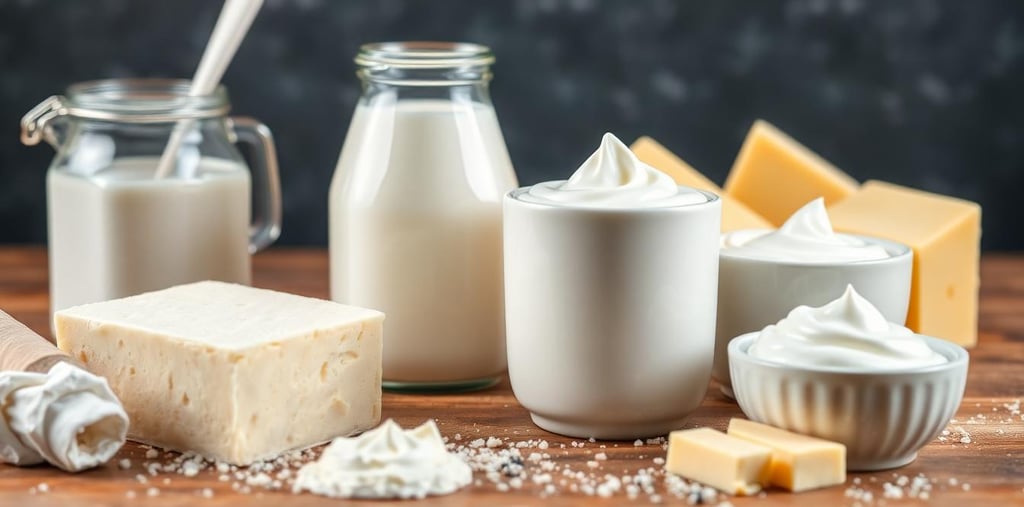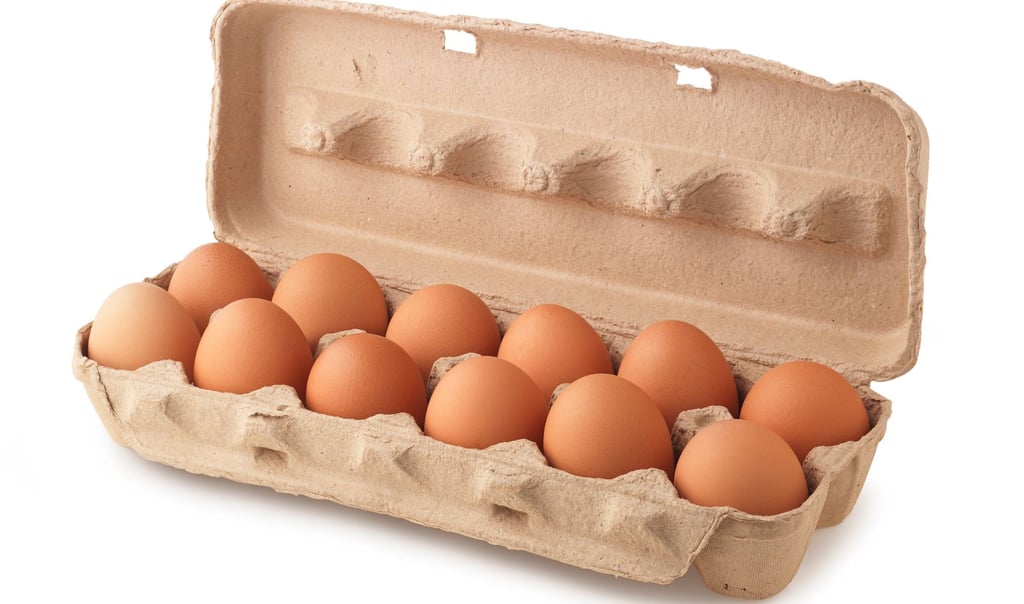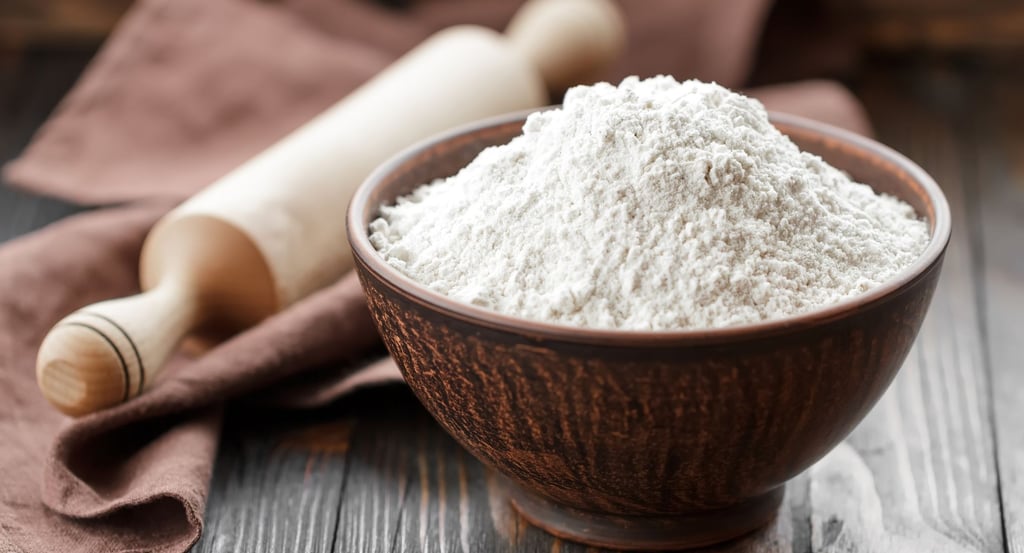Ingredient Substitutes Made Simple: Easy Swaps for Everyday Cooking
Need a backup plan in the kitchen? Ingredient Substitutes Made Simple shows easy swaps that save the day when you’re missing an item.
KITCHEN TIPS & TECHNIQUES
Shari Smith
6/6/202513 min read


Ever run out of an ingredient just when you need it most?
Ingredient substitutes are a simple way to skip the last-minute store run, whether you’re dealing with food allergies, special diets, or just an empty pantry.
They let you tweak recipes without missing a beat, so dinner still gets on the table and everyone can enjoy it.
Swapping ingredients isn’t just about convenience. It’s a little act of creativity that makes cooking more flexible, inclusive, and stress-free.
That’s why you’re seeing ingredient substitutes pop up in so many modern recipes—people want options that truly work for their lives.
No matter why you’re searching for a swap, knowing your ingredient substitutes means you can cook with more ease, confidence, and a touch of fun.
Let’s keep the kitchen welcoming for all.

7 Easy Ingredient Substitutions For Baking Emergencies
Watch Video...
Dairy Substitutes for Lactose Intolerance and Vegan Diets
Dairy ingredients are everywhere, from your morning coffee to baked goods and savory dishes.
But if you live with lactose intolerance, a dairy allergy, or have chosen a plant-based path, you know the importance of simple ingredient substitutes.
Swapping dairy doesn’t mean missing out—there are creative, tasty options for every recipe. Let’s look at some well-loved choices that work for both health needs and kitchen convenience.


Milk Alternatives: Plant-Based and Lactose-Free Options
Milk is one of the easiest ingredients to swap thanks to the growing list of plant and lactose-free options. Each brings its own flavor and texture, letting you match your choice to the recipe.
Here are some top picks:
Almond Milk: Light, nutty, and great for cereals, smoothies, and baking. Unsweetened versions work well in most recipes.
Soy Milk: Creamy and higher in protein than many plant milks. Use it for sauces, soups, and coffee.
Oat Milk: Smooth and slightly sweet, ideal for frothy lattes or baked goods. Oat milk often mimics the texture of dairy milk, making it a go-to substitute.
Coconut Milk: Rich and tropical, perfect for curries, desserts, and some baked treats. Canned coconut milk adds thickness and depth.
Lactose-Free Milk: Tastes and acts like regular milk, with the lactose removed. If you don’t want to shift flavors, use this in any recipe.
Tip: Match the plant-based milk to the dish for best results. For example, use soy or oat milk in savory dishes and almond or coconut milk in sweets.
Replacing Butter and Cream in Recipes
Good news—there are plenty of swaps that keep your dish rich and moist when you skip traditional butter or cream. These alternatives blend seamlessly into recipes, whether you’re baking cookies or whipping up mashed potatoes.
Try these ingredient substitutes:
Oils: Olive oil or avocado oil make easy, heart-healthy swaps for butter in stovetop cooking and some baking.
Margarine: Many brands now offer vegan versions. Use one-to-one for butter in most baked recipes.
Applesauce: Replace half or all of the butter in cakes or muffins for extra moisture and a lighter crumb.
Coconut Cream: Thick and velvety, coconut cream is a favorite for whipped toppings, ice cream, or creamy soups
Vegan Butter: Tastes and spreads like traditional butter, but it’s plant-based. Works in cookies, cakes, or on toast.
Blend or whisk these substitutes smooth before adding to recipes for the best texture.
Cheese and Yogurt Replacements
Craving cheesy comfort or tangy yogurt? New dairy-free options offer plenty of flavor and versatility in everything from snacks to main dishes.
Popular substitutes include:
Nut-Based Cheeses: Cashew or almond-based cheeses melt and stretch for pizzas or grilled cheese. Use them shredded, sliced, or as a creamy spread.
Soy or Coconut Cheeses: Try these for sandwiches, quesadillas, or melted over baked pasta.
Plant-Based Yogurts: Coconut, almond, and soy yogurts work in parfaits, dips, or even baking. Make sure to choose unsweetened varieties for savory dishes.
Switching to these alternatives opens up the world of cheesy and creamy flavors while keeping meals friendly for everyone.
With so many dairy swaps out there, it’s never been easier (or more fun) to find ingredient substitutes that fit your needs. Mix and match until you find favorites that keep your meals just as comforting as ever.
Egg Substitutes for Cooking and Baking
Running out of eggs or needing to skip them for dietary reasons is a common kitchen curveball.
The good news is you don’t have to put every recipe on hold.
There are simple ingredient substitutes for eggs that keep your cakes fluffy, your pancakes golden, and your favorites on the table.
Whether you’re swapping for a vegan lifestyle or allergies, these options let you keep things easy, creative, and just as tasty.


Vegan Egg Replacements: Flaxseed, Chia, and Commercial Products
For plant-based or egg-free cooking, a few pantry staples and some new market options get the job done.
Flaxseed “Egg” Flaxseed gives baked goods that familiar structure you’d expect from eggs. It works best in muffins, quick breads, and pancakes.
Here’s how to make one flax “egg”:
Mix 1 tablespoon ground flaxseed with 3 tablespoons water.
Let it sit for 5-10 minutes until it turns thick and gel-like.
Flax is mild in flavor. It blends right in and helps keep what you’re baking moist and tender.
Chia Seed “Egg” Chia seeds also bind and add moisture but offer a different texture—slightly more gel-like than flax.
Make one chia “egg” the same way:
Mix 1 tablespoon chia seeds (whole or ground) with 3 tablespoons water.
Wait for the mix to become thick and jelly-like.
Chia is perfect for recipes where a little texture isn’t a problem, like brownies or sturdy cookies.
Commercial Egg Replacer Powders Grocery store shelves now offer handy commercial products made for egg-free baking.
Popular brands include Ener-G, Bob’s Red Mill, and JUST Egg.
Most are easy: Add powder and water, following the box’s directions.
Use these in everything from cookies to waffles and even meatloaf.
Commercial options are usually flavorless and made to mimic eggs in both texture and rise.
If allergies or vegan eating are driving your search for ingredient substitutes, these make the switch easy and reliable.
Using Fruit and Vegetable Purees as Egg Alternatives
You probably already have some of these simple swaps in your fridge or pantry. Fruit and veggie purees aren’t just healthy—they’re a lifesaver for baked goods. They keep quick breads, cakes, and cookies moist, tender, and flavorful.
Applesauce
Use 1/4 cup unsweetened applesauce in place of one egg.
Applesauce has a mild flavor and works best in cakes, muffins, or sweet breads.
It helps with moisture and a bit of binding.
Mashed Banana
Swap 1/4 cup ripe, mashed banana for one egg.
Banana brings more flavor than applesauce, so it’s great for pancakes, banana bread, and breakfast treats.
Expect a touch of extra sweetness and a hint of banana flavor.
Pumpkin Puree
Use 1/4 cup canned or homemade pumpkin puree to replace an egg.
Perfect in fall-themed desserts, muffins, spice cakes, and brownies.
Adds moisture and richness without overpowering the other flavors if used in moderation.
Avocado
Try 1/4 cup well-mashed avocado per egg.
Avocado brings healthy fats and a creamy texture.
It’s best for brownies and chocolate cakes, where the green color and mild flavor blend seamlessly.
When using fruit or veggie purees as ingredient substitutes, remember most work best in recipes that call for no more than two eggs. They don’t help much with rising, so skip them in delicate cakes or soufflés.
Keeping these egg substitutes on hand means your recipes can stay flexible, whether you’re out of eggs or just want to try something new. You’ll keep your kitchen as welcoming and inclusive as ever.
Gluten-Free and Grain Substitution Options
Finding ingredient substitutes for gluten or grains can feel like a major kitchen puzzle, but the options today are both practical and delicious.
Whether you’re baking bread, making pasta, or cooking a cozy family dinner, there’s a simple swap for almost every recipe.
Let’s look at some go-to choices that make gluten-free and grain-free eating easier, without skipping the foods you love.


Flour Alternatives for Baking and Cooking
When it comes to flour, the choices go far beyond plain white. Popular ingredient substitutes make it easy to keep baking, thickening sauces, or crisping up dinner favorites.
Here are some favorites you’ll see in kitchens everywhere:
Almond Flour
Made from finely ground almonds, this flour is a staple for gluten-free baking. It’s soft, a bit nutty, and works best in recipes for cookies, muffins, or pancakes. Almond flour doesn’t rise the same as wheat, so look for recipes designed with it in mind.
Coconut Flour
Coconut flour is light, fluffy, and absorbs a lot of liquid. You usually need less of it—about a third as much as regular flour—and more eggs or liquid for moisture. Use it in muffins, quick breads, and pancakes for a subtle coconut hint.
Oat Flour
Made from ground oats, this gentle flour is a favorite for pancakes, waffles, or as part of a flour blend. Look for certified gluten-free oats if allergies are a concern. Oat flour adds softness and mild flavor and can often be swapped one-to-one in some recipes.
Gluten-Free Flour Blends
Grocery stores now stock a range of ready-to-use blends, great for those who miss the feel of regular all-purpose flour. These blends combine different grains and starches (like rice flour, tapioca, and potato starch) with gums or fiber for better texture. They work in most recipes and usually swap one-for-one with regular flour.
Tip:
Gluten-free flours all act a bit differently. If you’re new to them, start with a tried-and-true recipe or a ready-made blend for best results.
Pasta, Bread, and Grain Substitutes
Swapping out pasta or bread for gluten-free and grain-free ingredient substitutes opens up a whole new world of textures and flavors. These options fit right into everyday meals and keep things fun at the table.
Zucchini Noodles (Zoodles)
Spiralize fresh zucchini for a light pasta substitute. Zoodles are quick to make, cook in minutes, and work with bold sauces, fresh pesto, or a classic tomato sauce. They’re perfect for anyone watching carbs or avoiding grains.
Cauliflower Rice
Grated or pulsed in a food processor, cauliflower makes a fluffy, versatile rice substitute. Sauté quickly for a grain-free side or toss into stir-fries and burrito bowls. Cauliflower rice soaks up flavor and adds a gentle, earthy taste.
Gluten-Free Breads
Today’s gluten-free breads come in loaves, rolls, and even flatbreads. Look for those made with ancient grains or seeds for more flavor. Toast for breakfast, use for your favorite sandwich, or make garlic bread for pasta night.
Ancient Grains
Ancient grains like quinoa, buckwheat, and millet are naturally gluten-free and bring a nutty bite to salads, pilafs, or warm bowls. Each one cooks a little differently (check the package for directions), but they’re all easy swaps for rice or pasta.
Using these ingredient substitutes helps bring meals together with less worry about gluten or grains. Keep your pantry stocked with a few favorites and new recipes become an easy adventure.
Trying something new can lead to new family favorites or just a cozy, feel-good dinner at home.
Common Pantry Ingredient Substitutes for Emergencies
It happens to all of us: you’re halfway through a recipe when you realize something’s missing.
Maybe you just ran out of your favorite oil, or the baking powder ran dry unexpected. The good news?
With a few clever ingredient substitutes, you can save the dish and keep things running smoothly in your kitchen.
Here’s a handy guide to common swaps for those “oops” moments—so you can keep cooking without skipping a beat.


Basic Spice, Oil, and Baking Substitutes
A well-stocked pantry gives you freedom, but even if you’re low on supplies, there’s almost always a way to keep going. Below are some easy ingredient substitutes for everyday spices, oils, and baking essentials that come up often in home cooking.
Quick, reliable swaps:
Vinegar for Lemon Juice:
If a recipe calls for lemon juice, try using white vinegar or apple cider vinegar instead. Use them in a 1:1 ratio. The acidity is similar, so they work well in salad dressings, marinades, and baked goods. The flavor will be a little different, but in most dishes, it won’t be a problem.
Cornstarch for Flour (thickening):
Need to thicken a sauce or soup? Use cornstarch instead of flour. Replace each tablespoon of flour with 1/2 tablespoon of cornstarch. Mix it with a bit of cold water first for the smoothest results.
Vegetable Oil for Butter (baking):
No butter? Use an equal amount of a neutral oil like canola or vegetable oil when baking. For stovetop cooking, olive oil works as a flavorful, heart-healthy swap.
Baking Soda and Vinegar for Baking Powder:
Out of baking powder? Mix 1/4 teaspoon baking soda with 1/2 teaspoon vinegar to replace 1 teaspoon of baking powder. Add both to your recipe to help it rise.
Dried Herbs for Fresh:
If you're out of fresh herbs, use dried instead, but adjust the amount. Use one-third as much dried for fresh (so 1 tablespoon fresh = 1 teaspoon dried). The flavor will be a bit more concentrated, but it keeps the recipe on track.
Soy Sauce for Worcestershire Sauce:
In a pinch, swap an equal amount of soy sauce for Worcestershire sauce. Add a splash of vinegar or a pinch of sugar to balance the flavors.
Greek Yogurt for Sour Cream:
Greek yogurt makes a creamy substitute for sour cream in dips, dressings, and even baked goods. Use it 1:1 and enjoy a bit of extra protein, too.
Keep these ideas handy and your meals can still turn out great even when the pantry feels sparse.
Sugar and Sweetener Alternatives
Ingredient substitutes for sugar can save your recipe and open up some new flavor possibilities. Each sweetener has a unique taste and a slightly different effect on moisture or browning. Here’s a quick look at how to swap and what to expect:
Honey:
Sweeter than white sugar, honey adds moisture and a floral sweetness. Use 3/4 cup honey for every 1 cup sugar and reduce the liquid in the recipe by 2 tablespoons. Expect a slightly deeper flavor and quicker browning.
Maple Syrup:
Maple syrup brings a cozy, woodsy sweetness. For every 1 cup sugar, use 3/4 cup maple syrup and reduce liquids by 2-4 tablespoons. Great in oatmeal cookies, pancakes, and quick breads.
Agave Syrup:
Agave is mild and mixes smoothly. Substitute in a 3/4:1 ratio for sugar (3/4 cup agave for 1 cup sugar). Lower the oven temp by 25°F to prevent over-browning.
Stevia:
Stevia is very sweet and doesn’t act like sugar in baking, so check the brand’s conversion chart. Most products recommend about 1 teaspoon concentrated stevia or a single packet to replace 1 cup sugar. Flavor can be more intense, so use sparingly.
Coconut Sugar:
Tastes a bit like brown sugar, with a hint of caramel. For a one-to-one swap, use coconut sugar in place of regular sugar. It won’t dissolve quite as smoothly, but works beautifully in cookies, muffins, or sauces.
Tips for Successful Ingredient Substitution in Recipes
Swapping ingredients can feel like a quick fix, but it’s also a bit of kitchen magic. The best ingredient substitutes don’t just look or taste similar—they also work just right for the recipe.
Whether you’re mixing up a birthday cake or a weeknight dinner, getting the right swap keeps your food tasting great and feeling just right.
Finding a good substitute starts with knowing the job your missing ingredient does. Does it thicken? Add moisture? Give a signature flavor?
Here’s some guidance to help you match ingredient substitutes to your recipe so every meal feels fresh and still familiar.


Understanding Texture, Flavor, and Function Roles
Every ingredient brings something special to the table. Some give body and crunch, others provide that rich flavor you love, and many pull double duty by holding everything together.
When you look for ingredient substitutes, keep these three roles in mind:
Texture: Think about how the ingredient feels in your mouth. Is it creamy, crispy, chewy, or fluffy? Swapping coconut milk for cream will add richness, but not the same silkiness as dairy. For crunchy toppings, nuts can stand in for breadcrumbs, but they’ll bring more bite and a different feel.
Flavor: Each ingredient adds its unique taste. Vanilla and almond extracts can sometimes trade places, but the flavor will shift. For savory swaps, soy sauce makes a good stand-in for Worcestershire but expect a different depth and a bit more saltiness.
Function: Does it help your cake rise, bind your burgers, thicken a sauce, or keep cookies moist? Eggs are classic binders. In their place, ground flaxseed or chia can step in but bring a bit of their own texture.
Here are a few examples of matching substitutes based on the job you need them to do:
For binding: Use flaxseed “eggs,” mashed bananas, or even a spoonful of nut butter.
For thickening: Try cornstarch, arrowroot, or tapioca in place of flour for gravies and sauces.
For sweetness: Honey, maple syrup, or agave syrup can sub for sugar, but remember to tweak your liquids.
Short on the exact ingredient? Focus on what it does in the recipe, not just what it tastes like. Matching the job is half the battle.
Testing and Adjusting Recipes with New Substitutes
Kitchen swaps can surprise you—in good and not-so-good ways. Some substitute swaps will be dreamy on the first go, but others might need a little fine-tuning to get just right.
If you’re testing new ingredient substitutes, here are a few tips to help things go smoothly:
Start Small: Test the substitute in a smaller batch if you can. This way, you won’t risk a whole dinner or dessert on the first try.
Check Consistency: After mixing, does the batter or dough look similar to what you expect? If it’s runnier or stiffer than usual, try adding a tablespoon of liquid or flour at a time until the texture looks familiar.
Taste as You Go: Some swaps change the flavor more than others. Before baking or serving, taste a bit of the batter, sauce, or dough. Adjust with an extra pinch of spice, citrus, or sweetener if needed.
Watch Cooking Time: Some swaps brown or bake faster. Keep an eye on your dish and check for doneness a few minutes early, especially with sweeteners like honey or substitutes like coconut flour.
Write Down Your Changes: Jot down what worked and what didn’t. Next time, you’ll know just how to tweak the recipe.
Tip:
If your first test doesn’t turn out perfect, try adjusting ratios or changing your substitute. Sometimes all it takes is a second try or a little extra seasoning.
Ingredient substitutes open up new options, keep your meals flexible, and let you make the most of what you already have. With a little testing and an open mind, your recipes can stay satisfying—no matter what’s in your pantry.
Conclusion
Ingredient substitutes bring more freedom and ease into everyday cooking.
Whether you’re skipping the store run, including more people at your table, or just curious about something new, these simple swaps keep you in control and stress low.
Every kitchen has its surprises and small wins—trying different ingredient substitutes lets you stay curious, waste less, and maybe even find a cozy new favorite.
Every swap is an invitation to try, taste, and adjust recipes so they fit your needs and style.
Thanks for reading and being part of this ongoing kitchen adventure.
If you have a go-to substitute or want to share what worked for you, drop a comment or connect on social.
Your ideas help keep this space welcoming and full of fresh possibilities.
Southern Spice Homestyle Delights © 2025. All rights reserved.
Address
Rayville, La 71269
Want more from Southern Spice?


Get recipes, cooking inspiration, and exclusive information right to your inbox!
Categories




